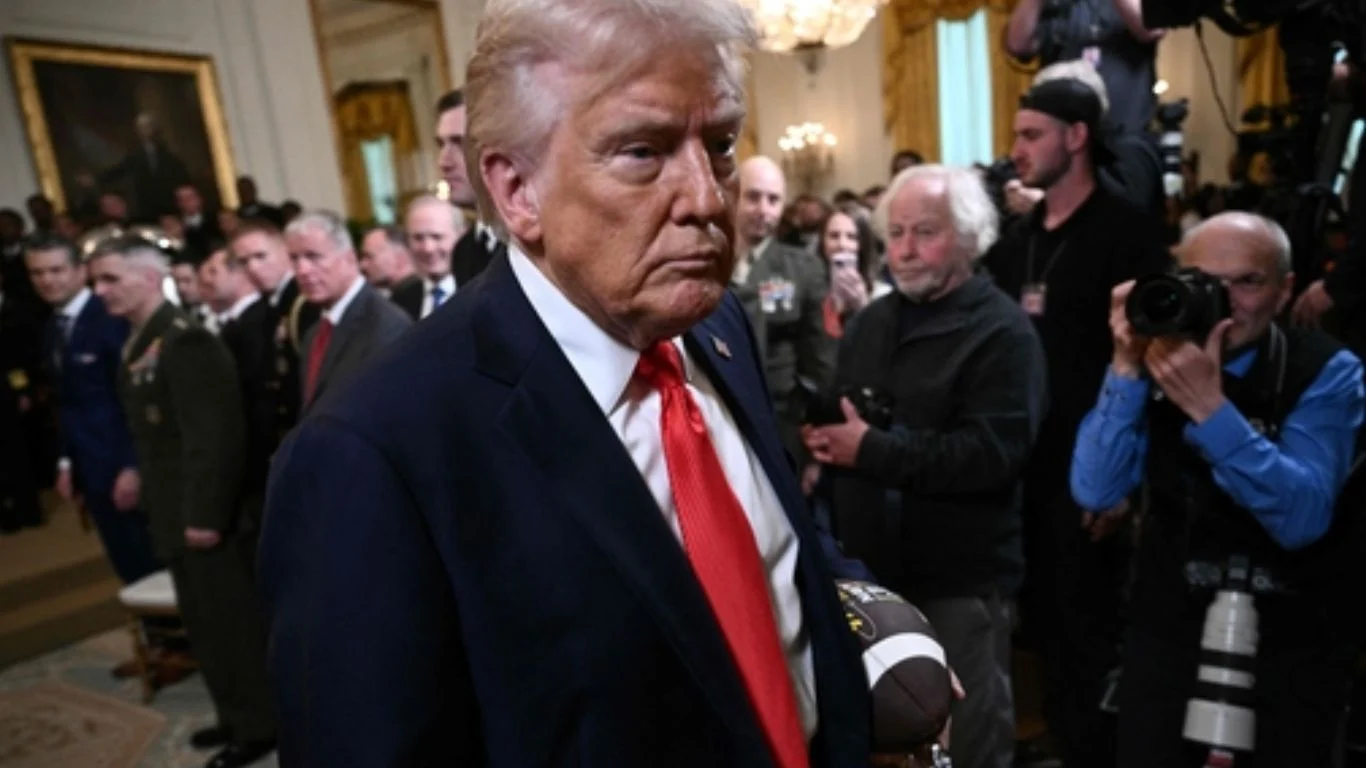
As trade tensions between the United States and China continue to mount, former President Donald Trump has issued a bold message to Beijing, stating that the responsibility to resolve the growing dispute now lies squarely with China. Speaking through White House Press Secretary Karoline Leavitt, who read aloud a statement reportedly dictated by Trump himself, the former president declared, “The ball is in China’s court. China needs to make a deal with us. We don’t have to make a deal with them.” He went on to frame the economic relationship between the two global powers in blunt terms, saying, “There’s no difference between China and any other country, except they are much larger, and China wants what we have—what every country wants—what we have: the American consumer. Or, to put it another way, they need our money.”
Trump’s forceful remarks come amidst an increasingly acrimonious trade standoff, sparked by escalating reciprocal tariffs imposed by both nations. The dispute recently took a dramatic turn after Beijing retaliated against Trump’s decision to sharply increase tariffs on Chinese imports—raising the rate to a staggering 145 percent—by instructing Chinese airlines to halt further purchases of Boeing Co. aircraft. The move was interpreted as a direct economic counterstrike aimed at one of America’s most iconic manufacturers, and it signals that China is prepared to leverage its market power in response to U.S. tariff hikes.
In a post on his social media platform, Truth Social, Trump lashed out at China’s decision, accusing Beijing of reneging on a previous aircraft deal. He wrote that China had “reneged on the big Boeing deal,” adding that Chinese authorities had informed the U.S. they would “not take possession” of aircraft they had previously committed to purchase. The former president portrayed the move not only as a breach of trust, but also as further justification for his administration’s hardline trade stance. “Based on the lack of respect that China has shown to the World’s Markets,” Trump wrote, “I am hereby raising the tariff charged to China by the United States of America to 125%, effective immediately.”
Trump’s renewed rhetoric and policy shifts reflect his broader trade strategy, which aims to pressure foreign nations into accepting terms more favorable to U.S. industries and consumers. Central to this strategy is the concept of “reciprocal tariffs,” which Trump has championed as a way to correct what he views as long-standing imbalances in global trade. Under this approach, the U.S. imposes tariffs that match or exceed those levied by other countries on American goods, with the goal of leveling the playing field and discouraging protectionist practices abroad.
However, while Trump remains unwavering in his stance toward China, he has signaled a willingness to ease tensions with other trading partners. In a notable shift, his administration announced last week that it would temporarily suspend all reciprocal tariffs—except those targeting China—for a period of 90 days. During this pause, the tariffs on non-Chinese imports will be reduced to a significantly lower rate of 10 percent. According to Trump, this move is intended to give countries time to come to the negotiating table and reach fairer trade agreements with the U.S.
“We are negotiating with dozens of countries around the world,” said a senior administration official, “and we expect many of them to respond positively to this gesture. The president believes in strong but fair trade, and this pause gives everyone a chance to realign their policies before harsher measures are considered again.”
While the pause on tariffs for most nations may be seen as an olive branch, Trump has made it clear that China is a different case entirely. In his Truth Social posts, he emphasized that China’s actions—both economically and politically—have undermined trust not just with the U.S., but with the global trading system at large. “At some point, hopefully in the near future,” Trump wrote, “China will realize that the days of ripping off the USA, and other countries, is no longer sustainable or acceptable.”
Analysts note that Trump’s statements reflect not just a negotiation tactic, but also a calculated appeal to his political base. The former president has long positioned himself as a defender of American workers and industries against what he describes as unfair competition from abroad. By casting China as the principal antagonist in a high-stakes economic showdown, he reinforces a narrative of American strength and self-reliance, particularly as he ramps up efforts for another presidential bid.
Meanwhile, Beijing has yet to formally respond to Trump’s latest round of tariff hikes or his statements regarding the stalled Boeing deal. However, Chinese officials have consistently maintained that they are willing to engage in trade discussions—provided the U.S. approaches talks with mutual respect and a spirit of compromise. State media outlets in China have criticized the U.S. measures as unilateral and provocative, and some commentators have suggested that Beijing could seek closer ties with other major economies to offset the impact of the American tariffs.
For now, though, the standoff continues, with no immediate signs of resolution. Businesses on both sides of the Pacific are bracing for more volatility, particularly in sectors most exposed to cross-border trade, such as manufacturing, agriculture, and technology. As Trump doubles down on his approach, the global economic community watches closely to see whether China will respond with further retaliation or take steps toward a negotiated settlement. Either way, the message from the former president is unmistakably clear: in his view, it’s now up to Beijing to make the next move.

















